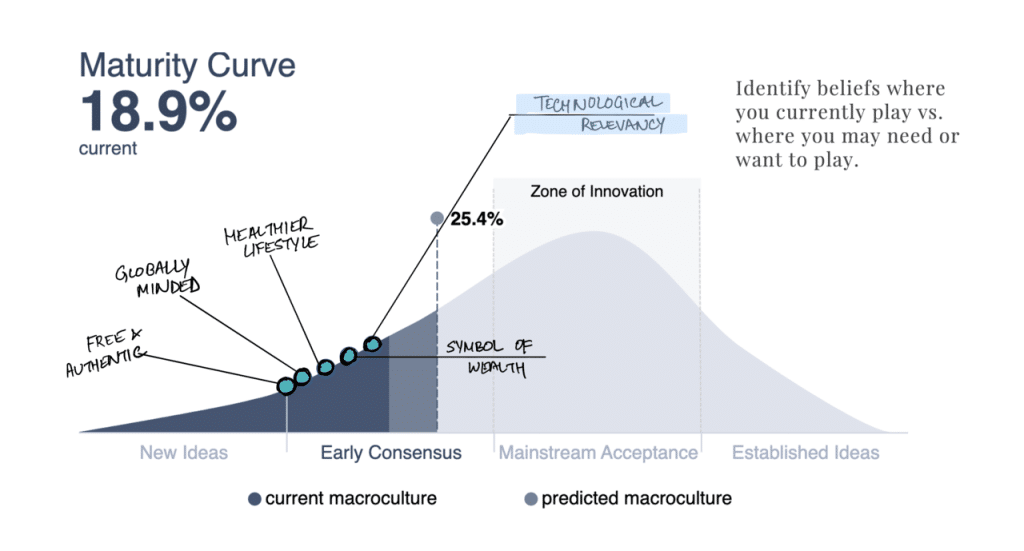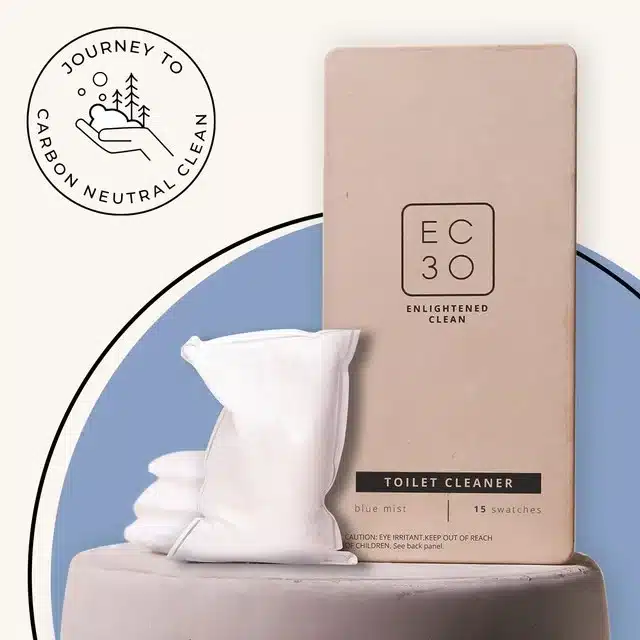Reason 1/3: Technological advancement and relevancy.
Does your organization typically ask about the “cultural requirements” that need to be met in order to make a new (more sustainable) product launch or solution successful?
Probably not.
Organizations are generally quite comfortable asking about the technical requirements to make something more sustainable. Researchers are of course comfortable asking consumers if/when they’re willing to buy sustainable alternatives. But understanding and decoding the cultural requirements is just not something that is common practice. The reason is quite simple – all of us in corporate research and innovation like logical ideas and cultural requirements are rarely logical. Which is exactly why they’re so critical to understand – they can make or break our investments and sometimes, our careers.
What are cultural requirements?
They are implicit needs that are required in order to make a technical solution or innovation market-viable (or intangibly valuable to the consumer). Cultural requirements are the things that make technical solutions “cool” – they give solutions the symbolic (social) capital it needs in order to make a dent on the consumer’s identity/sense of self. Many of us don’t realize how powerful the white earphones were when Apple first launched its iPod. The white wires which at the time no one else had allowed the iPod user to instantly stand out in a crowd. Without needing to utter a single word, an iPod user could tell the world that they were audiophiles, that they believed in the free flow and democratization of music. The white earbuds conveyed a set of beliefs that no one else (not Microsoft, not Sony) at the time figured out was critical to making a digital audio player successful in the mass market.
In the culture of sustainability, Technological advancement and relevancy is one such cultural requirement that makes a sustainable alternative more attractive, even something worth paying a premium for. In fact, it happens to be the most mature/dominant cultural requirement in this landscape – one that is exerting the most amount of positive pressure on the culture of sustainable alternatives, helping it further progress closer into mainstream acceptance, cross category.

What does technological advancement have to do with sustainability?
The reality is that many sustainable alternatives (to existing products/categories) aren’t technologically advanced. Which is absolutely okay – perhaps they can tap into one of the other four requirements I will discuss in the coming weeks. But for those solutions that have the opportunity to lead the way in terms of their technological and technical prowess, this cultural requirement provides a way to make a sustainable alternative naturally desirable to the consumer. Why?
Because it serves as a proof point that the consumer (who is buying it) is savvy and keeping themselves technologically relevant. As was in the case of the iPod, it conveys a set of implicit beliefs about the user to the outside world.
Examples of sustainable alternatives that demonstrate technical leadership and allow their consumers to implicitly demonstrate their relevancy.
1) The EC30 toilet cleaner – which turns a tired old category into an interesting and technically advanced solution. It does the job for you by foaming and dissolving away. Gone are those days of blue liquids and hard scrubbing.

2) CO2COA – a sustainable alternative to chocolate that once again pushes the boundaries of technological advancement.

3) VEJA shoes – an alternative to the traditional sneaker that uses innovative upcycled materials in manufacturing.

These are all examples of products where the technology element may not be glaringly obvious, but that is what makes them particularly interesting examples. The linkage is implicit yet the consumer makes it, often unknowingly.
Applying cultural requirements to the innovation lifecycle.
The analysis I’m using in this article looks at the meaning of sustainable alternatives through an industry agnostic lens. Which means applying the lens of a category will change the outcomes slightly. You’ll see more nuances in the cultural requirements and be able to take those into your innovation lifecycle. But it is critical to not dismiss cultural requirements as something that must be dealt with further down the lifecycle, perhaps by marketing. The consumer is very quick to pick up on solutions that look to fake an authentic connection with them.
Consider this example.
Let’s say you operate in the Home-Houseware space. If you examine the meaning of technological advancement and sustainability at this category level, you will discover some nuances to the cultural requirements. Namely that the consumer desires a level of transparency and openness in where and how products are manufactured (they want manufacturing outside of China!). The consumer also expects products to last longer (than typical mass market products) and wants the products to appear aesthetically sophisticated but not necessarily uniform.
Which means for a company to be successful in this space, they must meet these requirements and demonstrate how their technology helps them deliver products that are manufactured sustainably outside of China, that last longer perhaps due to some technical solution, and deliver aesthetically pleasing results. If these cultural requirements aren’t followed, a company might produce sustainable products but struggle to gain the social capital it needs to demand a higher price point or even create a viable business model.
This is exactly why we focus on ensuring that R&D and Innovation leaders understand the human side of the innovation equation. If you do not meet the cultural requirements needed to create interest and demand among your consumers, you will end up like the various digital music players that were launched well before the iPod with arguably better technical features and yet failed to make any kind of reasonable dent on our culture.
If you are interested in learning more, I recently gave a webinar on this topic. You can watch the recording here. In this webinar I provide an overview of the five cultural requirements shaping the future of sustainable alternatives. In subsequent articles on this newsletter, I will cover two more cultural requirements and highlight tangible examples that will hopefully inspire you to think about how these would apply to your work.